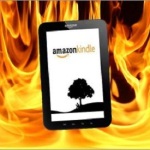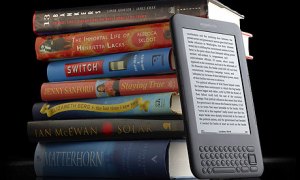 The Kindle Fire is a 7 inch tablet which links masterfully with Amazon’s impressive collection of digital books, magazines, videos and music. It is a user friendly product and boasts a fantastic web browser which comes with a curated Android app store which includes most of the hot apps of the moment such as Netflix, Pandora and Hulu. The Kindle Fire comes at a super affordable price and has brilliant screen quality for the price tag.
The Kindle Fire is a 7 inch tablet which links masterfully with Amazon’s impressive collection of digital books, magazines, videos and music. It is a user friendly product and boasts a fantastic web browser which comes with a curated Android app store which includes most of the hot apps of the moment such as Netflix, Pandora and Hulu. The Kindle Fire comes at a super affordable price and has brilliant screen quality for the price tag.
Of course there are drawbacks too. The budget price means that there are no premium features you’d expect such as 3G Wireless Internet, cameras, microphone or GPs. But the biggest issue might be the mere 8GB storage space, with no expansion slot.
The screen brightness could be better, and the application selection does not come close to Apple’s or Google’s frankly. You will also need an Amazon Prime subscription in order to take advantage of some of the more unique Features included with the Kindle Fire.
Although it lacks tech specs that would have been great, for the price you really could not ask for anything more. It is a thumbs up for the Kindle Fire.


